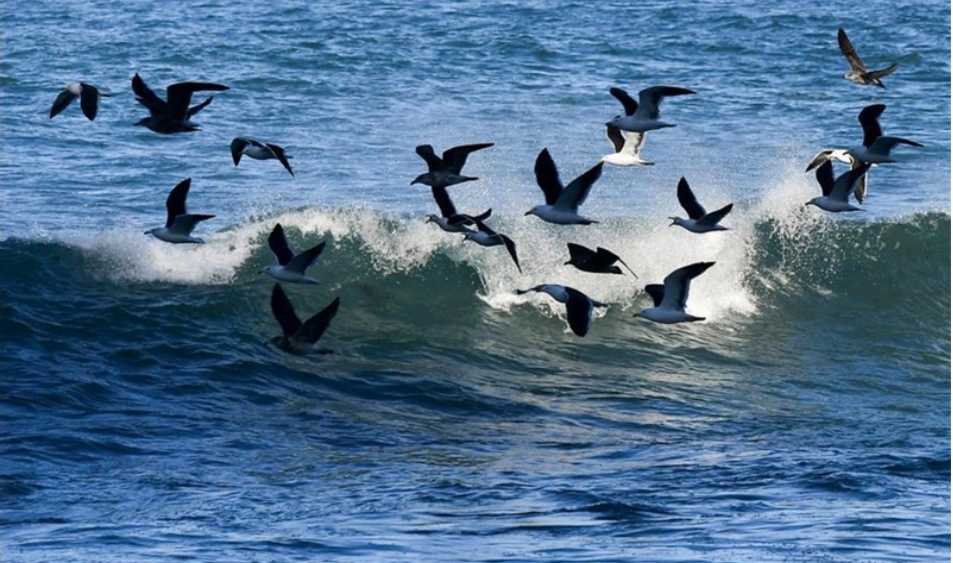Restoring land ecosystems also sparks ‘stunning’ improvements at sea

Sea birds fly over the sea in Wellington, capital of New Zealand, June 10, 2020. Wellington has been named New Zealand’s best destination in the Lonely Planet guidebook, with the city branded “one of the coolest little capitals in the world”.
Restoring islands devastated by invasive species and helping coastal “connectors” like seabirds boosts nature on land and at sea, and may be a new way to increase resilience to climate change, researchers said Monday.
A group of experts and scientists from across the world reviewed thousands of studies to build a picture of island health to map out new strategies for protecting their often unique and threatened species.
They found that removing invasive species and restoring island ecosystems on land can also have significant benefits to underwater environments.
That is largely thanks to the role played by “connector species” such as seabirds, seals and land crabs, which transfer nutrients from oceans to islands and vice versa, said the paper, which is published in Proceedings of the National Academy of Sciences.
The report comes as delegates for nearly 200 countries prepare to tease out a new blueprint to save nature from destruction wrought by humans, including key proposals for preserving 30 percent of land and sea, and bringing indigenous rights to the center of conservation.
Paper co-author Penny Becker of Island Conservation said that while indigenous island communities have known for generations the intricate links between healthy ecosystems on land and in the sea, Western conservation was “just catching up.”
“Carefully chosen conservation actions on islands can lead to really stunning changes in the neighboring ocean ecosystem, because everything is connected,” she said.
For example, seabirds catch their prey in the seas and then deposit nutrients back on the islands in the form of guano.
Evidence shows islands with high seabird populations usually have larger populations of fish, as well as faster-growing and more climate-resilient coral reefs, the researchers said.
But seabird populations across the world have plummeted, with the introduction on islands of non-native mammals, like rats that plunder nests to eat eggs and hatchlings, by human activity driving some bird species to local or global extinction.
Loss of these connector species populations “often results in ecosystem collapse-both on land and in the sea,” the authors said.
On Floreana island in the Galapagos, invasive species have devastated not just bird and plant species, but also livelihoods, with farmers losing up to 100 percent of their crops due to invasive rats that started to spread on the island, according to Karl Campbell from Re:Wild, which was also involved in the paper.
And some 13 species have gone locally extinct on the main island, he said, while 54 species are critically endangered, endangered or threatened.
The island is part of a new environmental campaign called the Island-Ocean Connection Challenge, which aims to restore and rewild at least 40 globally significant island ecosystems to benefit islands, oceans and communities by 2030.




